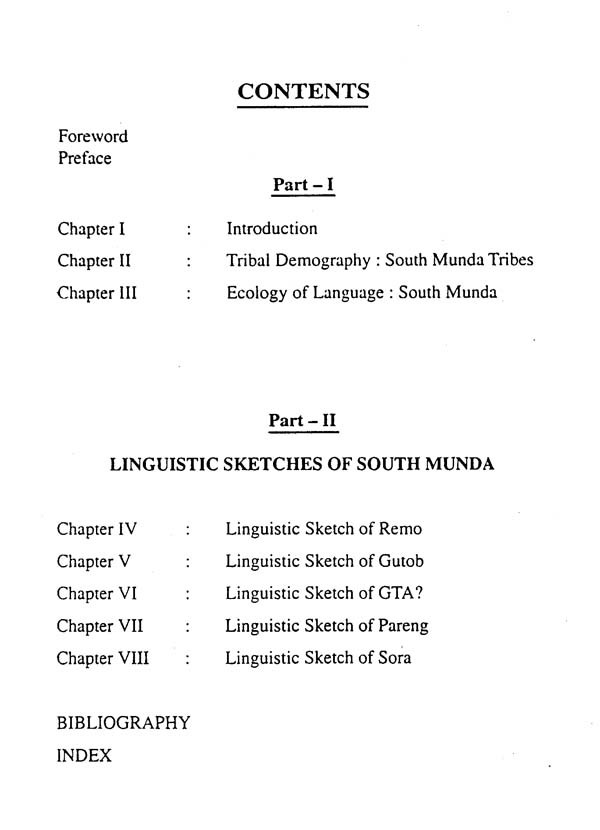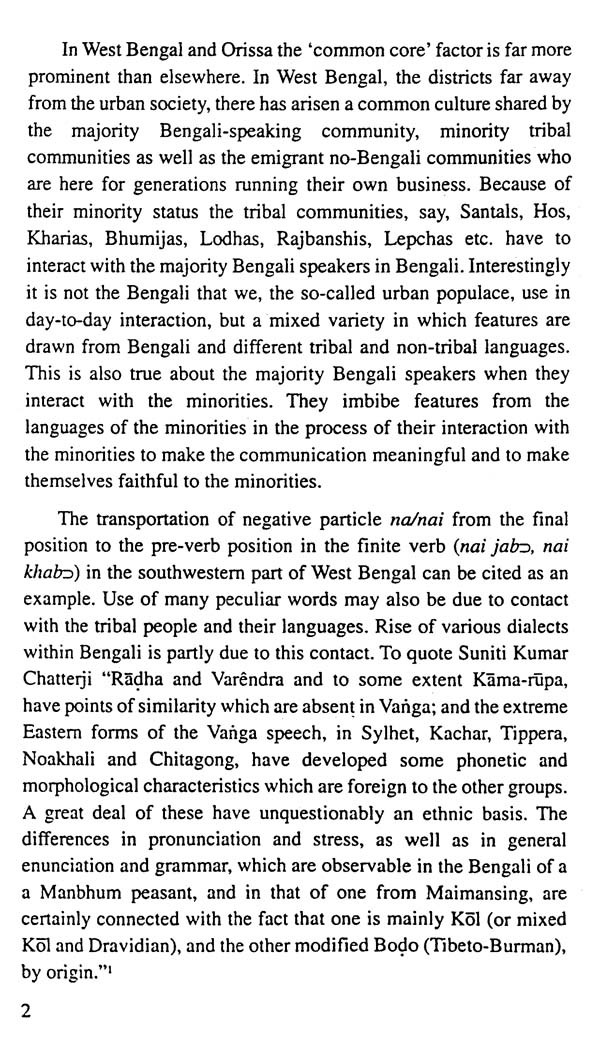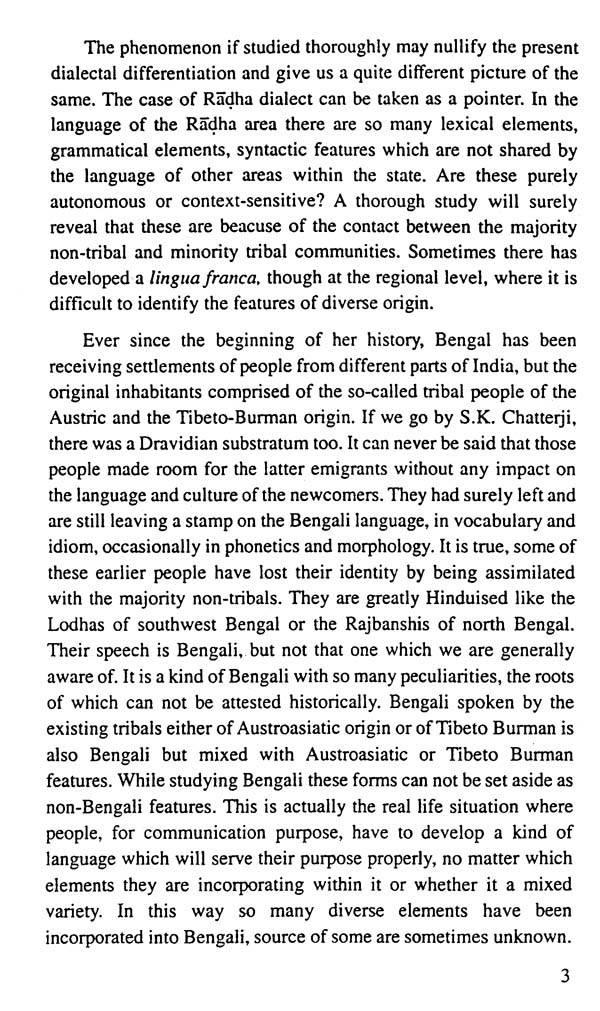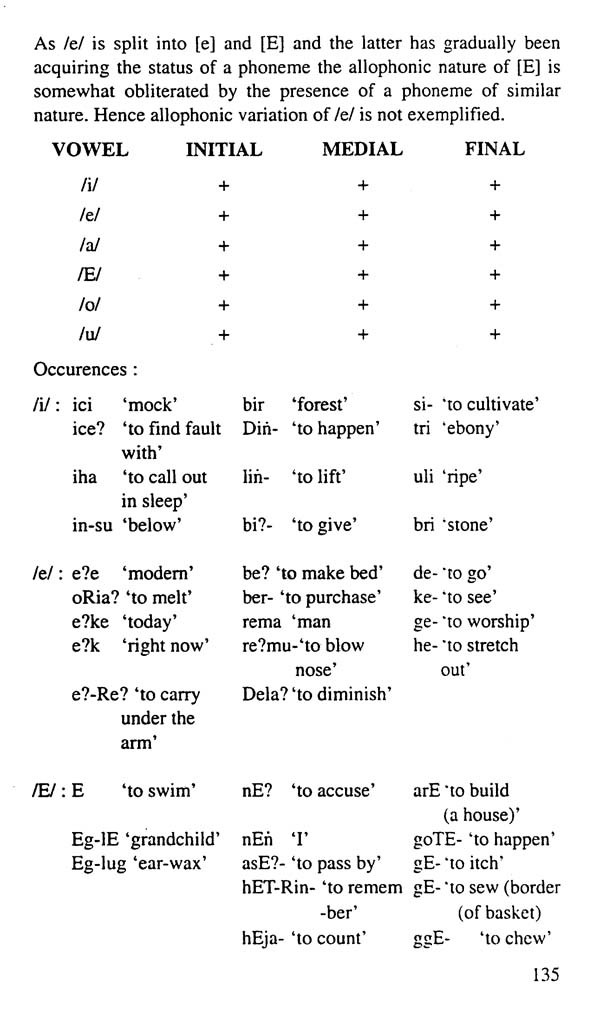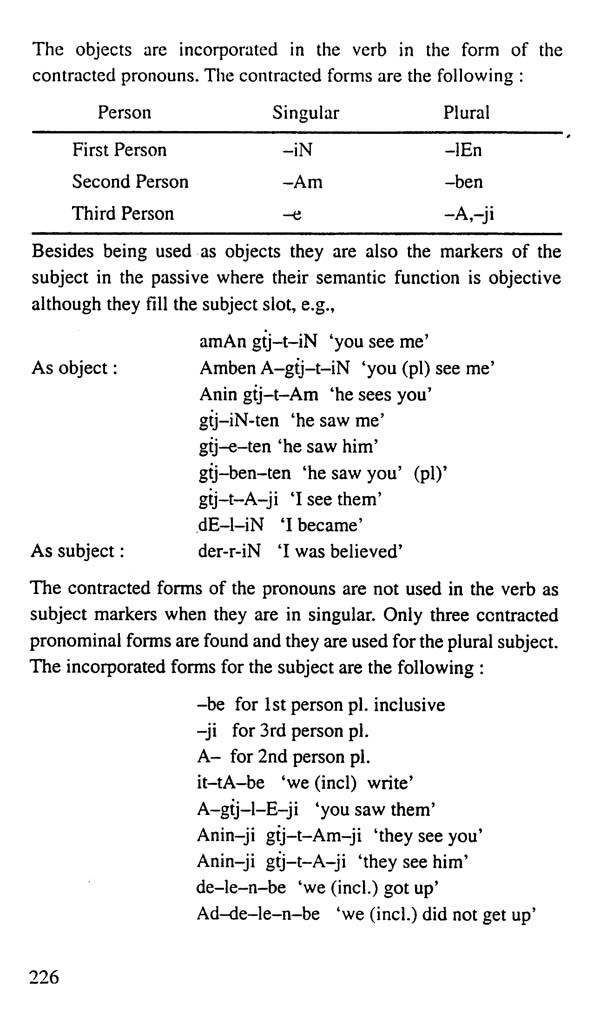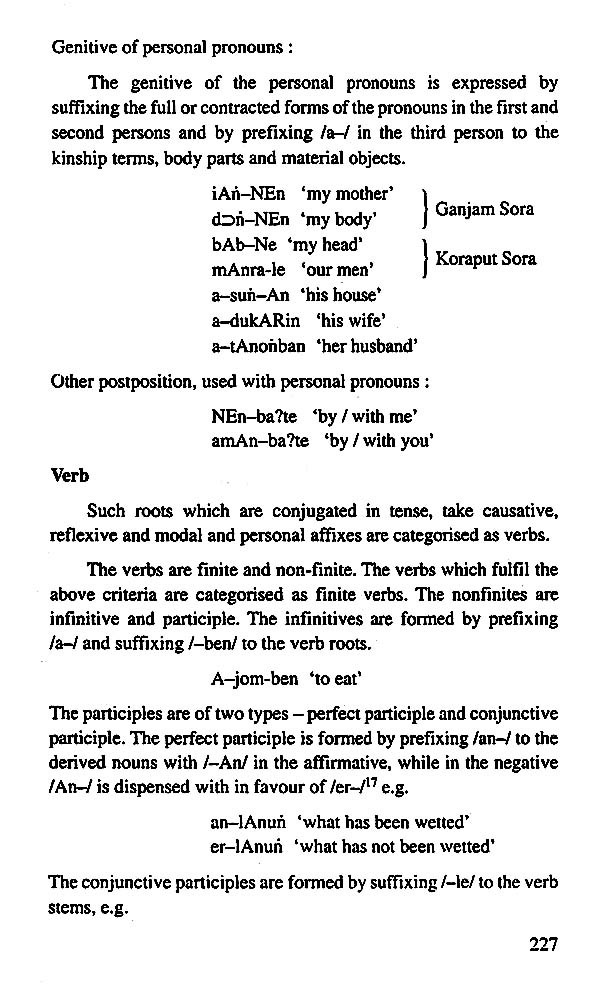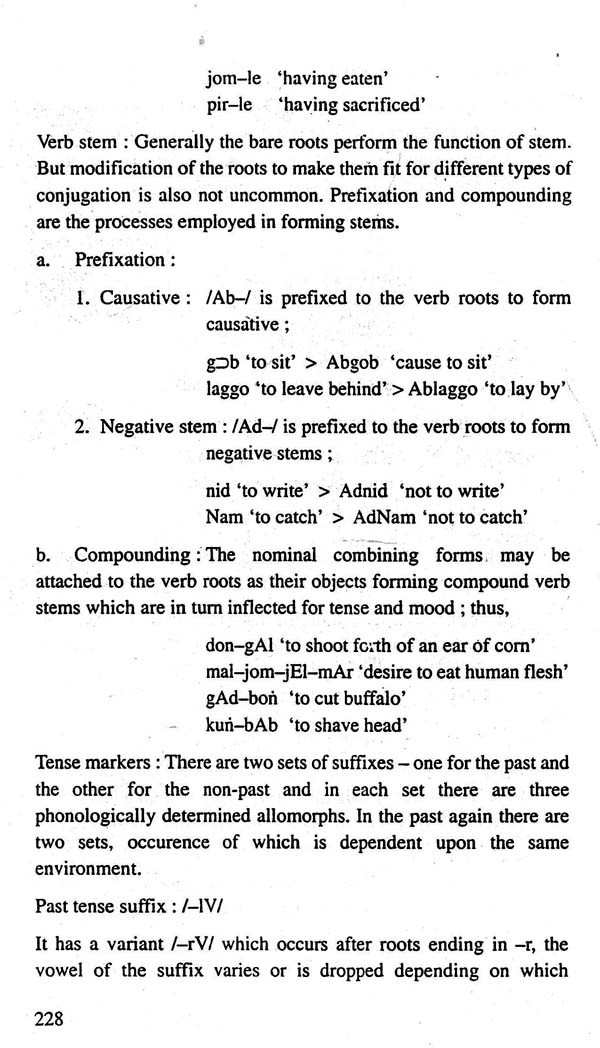
An Ethnolinguistic Profile of Eastern India A Case of South Orissa (An Old Book)
Book Specification
| Item Code: | NBZ594 |
| Author: | Arun Ghosh |
| Publisher: | The University of Burdwan |
| Language: | English |
| Edition: | 2003 |
| Pages: | 262 |
| Cover: | PAPERBACK |
| Other Details | 9.00 X 6.50 inch |
| Weight | 410 gm |
Book Description
I am really happy to know that the last in the series of major publications in the third phase of UGC DSA programme in the Department of Bengali, viz, ‘An Ethno linguistic Profile of Eastern India : A case of South Orissa' by Dr. Arun Ghosh, is going to be released shortly. Linguistic and cultural diversity is almost a common feature in many regions of India. Over the years, interactions, exchange and convergence have enriched each group and have resulted in new coinage phonetically and vocabulary-wise, so far as linguistic scenario is concerned. Tracing diverse ethnic origins, records of emigration and in-depth study can lead to notable revelations. In the backdrop of the rich variations from ethno linguistic view point in the eastern most states of India and coming down to West Bengal, Jharkhand and Orissa, Dr. Ghosh has made valuable introductory observations on the history, mutual exchange and The resultant canvas of different dialects and languages of tribal origin and the major languages of the area. He has chosen for detailed and micro-level ethno linguistic study, those tribal groups of Munda origin in Orissa in respect of whom not enough has so far been investigated in order to throw light for deciphering the nature of exchange, interaction and confluence leading to common core formation. The study is a highly specialized one and interested scholars will certainly find inspiration to come up with further analysis and review articles and thus the purpose of undertaking the present study will be served.
On behalf of the University of Burdwan and particularly on behalf of the Department of Bengali, I convey sincere thanks to the UGC for the assistance we have received so far and look forward to further encouragement and inspirations from the Commission.
I congratulate the author of this volume, the co-ordinator of DSA and all my colleagues in the department of Bengali for their sustained academic efforts.
The present study is the first step towards understanding the eastern part of India in ethno linguistic perspective. The seven sister states in the eastern part of India present a fascinating area of research to any researcher interested in cultural history. Three racial groups inhabiting this area for a long period of history cannot but intermix although they have different ways of life. They have different social organisations, different gods and goddesses and different languages. Geographical proximity has provided an essential blending factor with the changing global scenario they cannot completely isolate themselves from other groups. They have to interact for their existence. This way there is bound to develop a common core which can very well be explained Indianess. This is true far other regions too. But as we are concerned with the eastern part of India we define the term Indianess in explaining the situation of this part only.
In the back drop of the prevailing situation the present study has been planned, the micro level analysis of five tribal groups of Orissa, viz. Didayi, Bonda, Gutob, Parenga and Saora in ethno linguistic perspective. These groups are taken up as our knowledge of these groups, their languages and culture is still limited as compared with those of other tribal groups like the Santals, Mundas and others. Once we gather descriptive data of these groups it will be easier to decipher the nature of the common core formation, their affinities within and with the so-called Aryan groups like the Oriyas and the Banglees.
The study has been taken up for other reasons too. After Schimidt's epoch making configuration of Austroasiatic, Austronesian and austric very many scholars, both anthropologists and linguists, have experimented with the schemata drawing data from Munda and Monkhmer. But unfortunately no interdisciplinary works has been undertaken to probe the hypothesis. True, racial family and linguistic family may not have one-to-one correspondence. But by Austric, Schmidt also meant cultural family. May be Schmidt over generalized the theory. But there is no adequate study as yet to disprove the hypothesis by pinpointing cultural and social differences, With an aim to look into the matter also, both anthropologically and linguistically, we planned the project.
I have tried to exhaust both sources of data primary secondary and Primary data have been collected through field work—interview and observation. Language samples are not always sufficient and this has sometimes led to sketchy outline of the rammer of same of these languages, The secondary source materials published and unpublished have been partially utilized, particularly because of nonavailiabity of some of the unpublished materials. Nevertheless the linguistic framework adduced here will surely work as a sufficient starting point for comparative work.
I am grateful to my tribal brethren in Orissa for giving me information’s and taking care of my daily routine while I had been working with them. I am thankful to the authorities of Bonda Development Agency and Didayi Development Agency, Block Development Officer, Khairput for assisting no in my field work. I am also thankful number of school teachers of South Orissa who gladly accompanied me while I was M my trip. Last but not least the Education Department of Orissa who made arrangements for my trip.
I am thankful to the members of the Advisory Board of the DSA of the Department of Bengali, University of Burdwan for granting financial assistance to publish the book.
